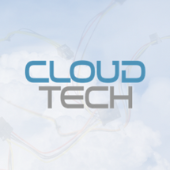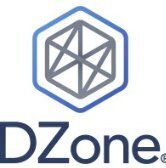Search the Community
Showing results for tags 'cost optimization'.
-
Today businesses across industries are increasingly leveraging cloud computing to drive innovation, agility, and scalability. Amazon Web Services (AWS), as a leading cloud services provider, offers a wide range of tools and services to help organizations transform their operations and accelerate growth. However, while migrating to the cloud can unlock numerous benefits, effectively managing cloud costs remains a critical challenge for many businesses. The Challenge of Cloud Costs As businesses embrace the cloud, they often encounter the complexity of managing cloud costs effectively. Without proper governance and optimization strategies in place, cloud spending can escalate rapidly, leading to budget overruns and diminished returns on investment. Factors such as underutilized resources, overprovisioning, and inefficient workload management can contribute to unnecessary cloud expenditures, undermining business efficiency and profitability. Optimizing Cloud Costs with AWS Expertise Harnessing AWS expertise can significantly enhance an organization’s ability to optimize cloud costs and maximize financial benefits. AWS offers a suite of cost management tools and services designed to help businesses monitor, analyze, and optimize their cloud spending effectively. By leveraging AWS’s extensive ecosystem of services and solutions, organizations can implement cost-saving strategies tailored to their specific needs and requirements. Key Strategies for Cost Optimization Right-sizing Resources: AWS provides tools such as AWS Compute Optimizer and AWS Trusted Advisor to analyze resource utilization and recommend rightsizing options. By matching resources to workload requirements, organizations can eliminate waste and reduce unnecessary spending on overprovisioned instances. Reserved Instances and Savings Plans: AWS offers Reserved Instances and Savings Plans, which enable organizations to commit to a certain level of usage in exchange for discounted pricing. By strategically leveraging these purchasing options, businesses can achieve significant cost savings over the long term. Spot Instances and Auto Scaling: Spot Instances allow organizations to bid on spare AWS capacity at reduced rates, offering cost-effective options for non-critical workloads or batch processing tasks. Additionally, Auto Scaling enables dynamic adjustment of resources based on workload demand, optimizing resource utilization and minimizing costs. Cost Allocation and Tagging: AWS provides features for cost allocation and tagging, allowing organizations to track and attribute cloud costs accurately. By implementing robust tagging policies and cost allocation mechanisms, businesses can gain visibility into cost drivers and make informed decisions to optimize spending. Cloud Financial Management with AWS Cloud Financial Management with AWS involves strategies and practices aimed at effectively controlling, optimizing, and aligning cloud costs with business goals. This could be achieved through the FinOps framework where the DevOps team and the engineering team collaborate for cloud financial management discipline. Key Areas User-Defined Methods to Organize and Report on Cost and Usage Manage Billing and Control Costs Improved Planning with Flexible Forecasting and Budgeting Optimize Costs with Resource and Pricing Recommendations Tools & Services AWS Billing Conductor, AWS Cost Allocation Tags will be effective for organizing and AWS Cost Categories can be utilized to construct a cost allocation strategy that aligns with the business logic. For Reporting AWS Cost Explorer, AWS Cost and Usage Report, AWS Application Cost Profiler tools can be utilized which raises awareness and accountability of the cloud spend with the detailed, allocable cost data. In order to Access to Track billing information across the organization in a consolidated view AWS Consolidated Billing, AWS Purchase Order Management , AWS Credits tools will be effective. For establishing effective governance mechanisms with the right guardrails in place AWS Cost Anomaly Detection, AWS Identity and Access Management, AWS Organizations, AWS Control Tower, AWS Service Catalog tools will be the apt ones. AWS Cost Explorer (Self-Service) and AWS Budgets (Event-Driven) will support estimating the resource utilization and spend. The budget spent in check can be assessed and analyzed through AWS Budgets, AWS Budget Actions, AWS Service Catalog with custom budget threshold and auto alert notification. To Rightsize, i.e., to align the service allocation size to your actual workload demand tools like AWS Cost Explorer Right Sizing Recommendations, AWS Compute Optimizer, Amazon Redshift resize, Amazon S3 Intelligent Tiering can be effective. Amazon web services leverage free trials and programmatic discounts based on your workload pattern and needs through AWS Free Tier, AWS Reserved Instances, AWS Savings Plans, AWS Spot Instances or Amazon DynamoDB On-demand. Maximizing Financial Benefits By harnessing AWS expertise to optimize cloud costs, organizations can maximize financial benefits and drive business efficiency in the following ways: Cost Savings: Implementing cost optimization strategies enables organizations to reduce cloud expenditures and reinvest savings into innovation and growth initiatives. Scalability and Flexibility: AWS’s scalable and flexible infrastructure empowers businesses to adapt to changing market conditions and scale resources up or down as needed, ensuring cost efficiency and agility. Performance and Reliability: By optimizing resource allocation and workload management, organizations can enhance performance and reliability, delivering a superior experience to customers and stakeholders. Strategic Insights: AWS’s cost management tools provide valuable insights into cloud spending patterns and trends, enabling organizations to make data-driven decisions and optimize their cloud investment strategies over time. Conclusion In today’s competitive business landscape, effectively managing cloud costs is essential for driving business efficiency and maximizing financial benefits. By leveraging AWS expertise and implementing cost optimization strategies, organizations can unlock the full potential of the cloud while ensuring optimal resource utilization, cost efficiency, and financial sustainability. With the right tools, insights, and best practices in place, businesses can accelerate their cloud journey and achieve greater agility, innovation, and success in the digital age. View the full article
-
Flexera has admitted that 2024 is a ‘complex’ year for cloud adoption as the company publishes its latest State of the Cloud report – and while cost optimisation remains key, sustainability is slowly emerging as an important differentiator. The report – the 13th – is often regarded as a benchmark study for the industry, with... Read more » The post Flexera 2024 State of the Cloud: Cost optimisation, FinOps and GenAI key takeaways appeared first on Cloud Computing News. View the full article
-
Optimizing resource utilization is a universal aspiration, but achieving it is considerably more complex than one might express in mere words. The process demands extensive performance testing, precise server right-sizing, and numerous adjustments to resource specifications. These challenges persist and, indeed, become more nuanced within Kubernetes environments than in traditional systems. At the core of constructing a high-performing and cost-effective Kubernetes cluster is the art of efficiently managing resources by tailoring your Kubernetes workloads. Delving into the intricacies of Kubernetes, it's essential to comprehend the different components that interact when deploying applications on k8s clusters. During my research for this article, an enlightening piece on LinkedIn caught my attention, underscoring the tendency of enterprises to overprovision their Kubernetes clusters. I propose solutions for enterprises to enhance their cluster efficiency and reduce expenses. View the full article
-
- efficiency
- k8s
-
(and 1 more)
Tagged with:
-
Predictive Optimization intelligently optimizes your Lakehouse table data layouts for peak performance and cost-efficiency - without you needing to lift a finger. View the full article
-
- lakehouse
- optimization
-
(and 2 more)
Tagged with:
-
The financial intricacies of Kubernetes deployments demand more than reactive measures alone. Organizations have a choice: react to costs as they arise or employ FinOps (financial operations) practices to anticipate and manage expenditures proactively. Yet the road to efficient Kubernetes FinOps is far from one-dimensional. It's an ever-evolving practice that must be fine-tuned according to operational realities and architectural demands. If a certain cost model continues to yield returns without overwhelming resources, perhaps it's due for scaling. Conversely, a recurring budgetary shortfall may signal the need for an extensive financial overhaul. View the full article
-
Improve Kubernetes cost and reliability with the new Policy Controller policy bundleView the full article
-
- k8s
- reliability
-
(and 2 more)
Tagged with:
-
In a world where software systems rule the digital landscape, there’s a lurking terror that goes bump in the code. It’s called “observability,” and you may not be prepared to pay its price. Observability is essential for maintaining the performance and reliability of digital creations. Like a boat in shark-infested waters, it’s a lifeline of […]View the full article
-
The success of any application depends on the user experience it provides. It's no secret that a positive user experience is directly linked to customer satisfaction and long-term engagement. Cost optimization is important to an application’s success too, of course. In pursuing cost optimization, Kubernetes administrators and application developers attempt to balance reliability and cost. But according to our recent State of Kubernetes Cost Optimization report, user experience can be compromised when cost optimization efforts overlook reliability. This emphasizes the critical need to prioritize user experience while considering cost-optimization measures...
-
AWS Fargate is a serverless compute engine for running Amazon Elastic Kubernetes Service (Amazon EKS) and Amazon Elastic Container Service (Amazon ECS) workloads without managing the underlying infrastructure. AWS Fargate makes it easy to provision and scale secure, isolated, and right-sized compute capacity for containerized applications. As a result, teams are increasingly choosing AWS Fargate to run workloads in a Kubernetes clusters. It is a common practice for multiple teams to share a single Kubernetes cluster. In such cases, cluster administrators often have the need to allocate cost based on a team’s resource usage. Amazon EKS customers can deploy the Amazon EKS optimized bundle of Kubecost for cluster cost visibility when using Amazon EC2. However, in this post, we show you how to analyze costs of running workloads on EKS Fargate using the data in the AWS Cost and Usage Report (CUR). Using Amazon QuickSight, you can visualize your AWS Fargate spend and allocate cost by cluster, namespace, and deployment... View the full article
-
As indicated in my prior blog, Optimizing Cloud Costs for DevOps With AI-Assisted Orchestration, an AI-assisted Kubernetes orchestrator is needed to optimize cloud costs for DevOps, DevSecOps and SRE. This blog describes the landscape for cloud-native optimization approaches and a features requirement blueprint for an AI-assisted Kubernetes orchestrator. The blog also describes a roadmap for […] The post Optimizing Cloud Costs for DevOps With AI-Assisted Kubernetes appeared first on DevOps.com. View the full article
-
Google Cloud Next ‘22 kicks off on October 11 and is one of our favorite times of the year because it brings together a global community of builders, innovators, developers, learners, and leaders shaping the future of cloud computing. Packed with 24 hours of in-person and global digital broadcasts, you’ll find content and experiences to help you face your cloud challenges head on. But with all that Next ‘22 has to offer, you may be wondering where to begin. If you want to learn from industry experts and real-world customers on how to optimize your costs on Google Cloud and create efficient solutions to maximize your value, then look no further than the following five Next ‘22 sessions - a specially curated playlist of sessions from the Google Cloud FinOps Digital Transformation Practice. Cost Optimization in the cloud: best practices for startups (INV113) With the current state of venture capital investment, it’s more important than ever to maximize your cash on hand and extend your runway. In this session, we’ll take a look at the current investment landscape and offer best practices and tips to keep the doors open until the market opens up again. Learn more on how Nuro partners with Google Cloud to plan, measure, and create an actionable plan to optimize its cloud spend and drive cost efficiency with Google Cloud FinOps leading practices. >> Add this session to your Next ‘22 Playlist << Additional resources: Maximize business value with Cloud FinOps Unlocking value of cloud FinOps with new operating model Forbes: Secret to unlocking the economic potential of public cloud Top 10 ways to lower your costs on Google Cloud (MOD103) Worrying about cloud costs? In working with hundreds of Google Cloud customers, we curated a list of the top 10 cost optimization techniques to optimize Google Cloud services, including Compute Engine, BigQuery, Google Kubernetes Engine, Cloud Storage and more. Listen to real-world stories on how General Mills approached the discipline of cost savings at scale and accelerated their adoption of Cloud FinOps. This session also covers exciting new features and announcements coming out the week of Google Cloud Next! >> Add this session to your Next ‘22 Playlist << Additional resources: Google Cloud Architecture Framework: Cost Optimization How to Optimize Google Cloud Costs: Compute, Networking, and Cloud Storage Best practices for optimizing Google Cloud costs Optimize for reliability, innovation and cost-efficiency with GKE (OPE201) In this session we will explore the best practices required to continuously deliver business value by running reliable, innovative, performant, and cost-efficient applications on Google Kubernetes Engine. You will learn how to leverage metrics from Google Cloud, as well as tips and tricks to lower your Kubernetes costs by mastering cost optimization signals. >> Add this session to your Next ‘22 Playlist << Additional resources: Best practices for running cost optimized applications on GKE YouTube series on understanding and optimizing GKE Hands on Training: Optimize cost for Google Kubernetes Engine Automating the solution to cloud cost optimization (PAR18) Effective cost management is key to continued acceleration and innovation in the public cloud. Learn from customers like Taboola on how they are partnering with DoiT International to implement cloud cost optimization using automated technology like Flexsave from DoiT. >> Add this session to your Next ‘22 Playlist << Additional resources: Google Cloud Partner: DoiT International FlexSave by DoiT Five best practices for reducing Google Cloud costs (PAR31) Learn more about tools and techniques such as Recommender services, BigQuery Flex Slots, advanced billing reports, and VM maintenance policies. In this session, ROI training will show you how these tools and best practices can have a massive impact on lowering your Google Cloud spend. >> Add this session to your Next ‘22 Playlist << Additional resources: Best practices to optimize your cloud costs Active Assist: Insights and Recommendations Getting started with Recommendations Hub Related Article Read Article
-
- google cloud next
- gcp
-
(and 2 more)
Tagged with:
-
Starting today, customers of AWS Cost Anomaly Detection will see a new interface in the console, where they view and analyze anomalies and their root causes. AWS Cost Anomaly Detection monitors customers’ spending patterns to detect and alert on anomalous (increased) spend, and to provide root cause analyses. View the full article
-
A new study from Stanford University found that it takes 75 gigajoules per year of energy for a person to have a good, long life, but the average American uses nearly four times that amount: 284 gigajoules/year. In fact, the U.S. consumes 17% of the world’s energy while accounting for only 4% of the population. […] The post Reducing Energy Consumption With Cloud Cost Efficiency appeared first on DevOps.com. View the full article
-
As your application needs change, Amazon EBS Elastic Volumes allows you to easily increase capacity, tune performance, and change the type of Amazon EBS volumes. Customers are using EBS Elastic Volumes to migrate to gp3 volumes and save up to 20% per GB compared to gp2 volumes. View the full article
-
- ebs
- performance
-
(and 2 more)
Tagged with:
-
Amazon Timestream will no longer charge customers for the dimension names and measure names associated with ingesting, storing, and querying data written after July 8, 2022 00:00 UTC. Dimension names and measure names are metadata that is used to identify time series data. With this change, Amazon Timestream provides customers increased flexibility in dimension and measure naming, as well as improved cost-effectiveness of the service. Amazon Timestream will continue to charge for ingesting, storing, and querying the dimension values, measure values, and timestamps associated with time series data. To learn more about costs while using Amazon Timestream, visit our pricing page. View the full article
-
Two mainstays drive most application migration and modernization initiatives. First, organizations are moving workloads to the cloud as an innovation catalyst. Achieving their strategic goals requires the speed, agility, reliability and advanced technical capabilities available to them in a hyperscale cloud. Second, they’re intent on ensuring the return on investment (ROI) through cost optimization, which […] View the full article
-
- finops
- cost optimization
-
(and 1 more)
Tagged with:
-
The cloud is becoming a large cost center for many organizations. Though often touted as a cost-saver—and while many cloud migrations are driven by the desire to conserve IT costs—the cloud does create operating expenses at the same time it cuts down on capital expenses. Moreover, unlike traditional IT investments, cloud costs can be unpredictable […] The post Saving on AWS Costs with Data Classification appeared first on DevOps.com. View the full article
-
- cost optimization
- data
-
(and 1 more)
Tagged with:
-
AWS Cost Allocation Tags now offers APIs that you can use to activate and deactivate your Cost Allocation Tags. After you activate a Cost Allocation Tag, it will appear in your cost management products, such as AWS Cost Explorer and AWS Cost and Usage Report. You can use Cost Allocation Tags to filter, categorize, and track your AWS cost and usage information. Previously, you had to activate and deactivate Cost Allocation Tag on the Cost Allocation Tag page in the AWS Billing Console. With this launch, you can use the ListCostAllocationTags API to list all Tags and use the UpdateCostAllocationTagsStatus API to activate and deactivate Cost Allocation Tags. View the full article
-
Have you ever wondered what it will cost to run a particular Google Kubernetes Engine (GKE) cluster? How various configurations and feature choices will affect your costs? What the potential of autoscaling might be on your bill? If you’ve ever tried to estimate this yourself, you know it can be a puzzle — especially if you’re just starting out with Kubernetes, and don’t have many reference points from existing infrastructure to help. Today we are launching the GKE cost estimator in Preview, seamlessly integrated into the Google Cloud console... Read Article
-
- gke
- cost optimization
-
(and 2 more)
Tagged with:
-
Are you sure you’re following all of the practices and strategies to optimize your expenses? AWS has many flexible methods of keeping your expenditure to a minimum but the myriad of services and strategies could overwhelm you. Check out the list of essential strategies below to see if you’ve got all.. View the full article
-
Good blog post describing a few tools to help you manage resources & reduce cloud spending; https://srcco.de/posts/saving-cloud-costs-kubernetes-aws.html
-
Amazon EMR now supports Amazon EC2 M6g, C6g and R6g instances with EMR Versions 6.1.0, 5.31.0 and later. These instances are powered by AWS Graviton2 processors that are custom designed by AWS utilizing 64-bit ArmNeoverse cores to deliver the best price performance for cloud workloads running in Amazon EC2. Please read our blog for more information. View the full article
-
Savings Plans is a flexible pricing model that offers savings of up to 72% on your Amazon EC2, AWS Lambda, and Amazon ECS with AWS Fargate type usage, in exchange for a commitment to a consistent amount of compute usage (measured in $/hour) for a 1 or 3 year term. When you purchase a Savings Plan, you will be charged the discounted Savings Plans price for your usage up to your commitment. View the full article
- 1 reply
-
- aws
- cost optimization
-
(and 1 more)
Tagged with:
-
Forum Statistics
73.3k
Total Topics71.2k
Total Posts
.png.6dd3056f38e93712a18d153891e8e0fc.png.1dbd1e5f05de09e66333e631e3342b83.png.933f4dc78ef5a5d2971934bd41ead8a1.png)







.thumb.jpg.10b3e13237872a9a7639ecfbc2152517.jpg)